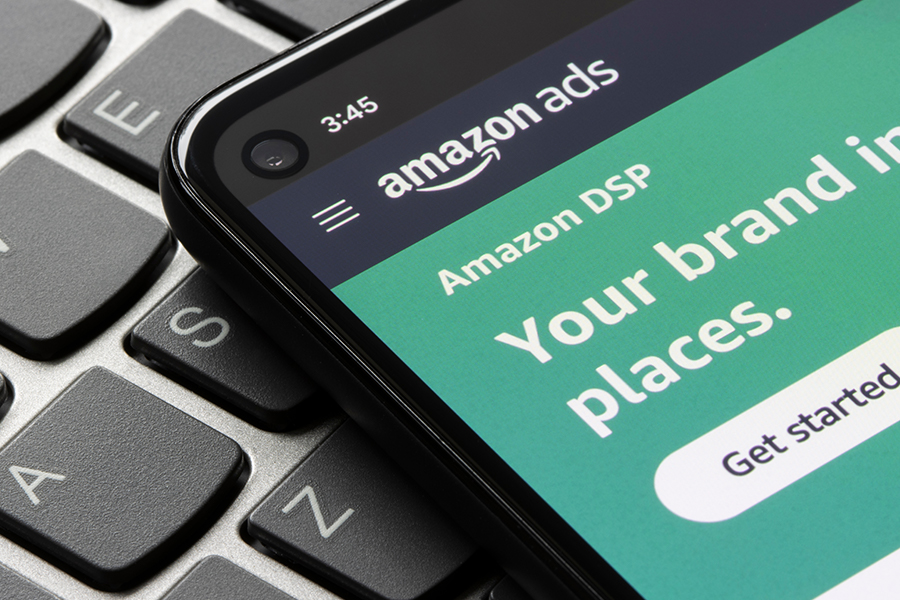Resources - Blog
How to Set Effective Goals For Your Amazon PPC Campaign

Find out how to set effective SMART goals for your Amazon PPC campaign. Plus, get a list of KPIs you should be using and KPIs you should avoid when creating successful campaigns.
In 2021 alone, over $469 billion in net sales were made on Amazon
Change is coming at an accelerated pace in the e-commerce space, magnifying the need to remain agile and adaptable. This is especially true for those advertising on Amazon.
Amazon is one of the world’s largest e-commerce and advertising players. In 2021 alone, over $469 billion in net sales were made on Amazon. But as competition continues to grow on Amazon, advertising is becoming increasingly critical for the 1.9 million sellers on the platform.
This blog will teach you how you can set effective PPC campaign goals on Amazon to meet your campaign or business objectives. You will also receive a list of the most helpful KPIs you can use to track the progress of your campaign goals.
Further Reading: Amazon PPC Advertising Basics
Stay on top of the latest e-commerce and marketplace trends.
How to Set Effective Amazon PPC Campaign Goals
1. Define Your Amazon Advertising PPC Campaign Goals
Your advertising goals should always tie back to your business goals or a well-defined campaign objective.
Here are some examples of common overarching business goals that can be linked to PPC campaigns:
- Increasing market dominance
- New product launches
- Long-term profitability
- Liquidating underperforming stock
- Widening your customer base
- Narrowing your target customers
- Achieve a specific profit margin
- Increase organic results and brand awareness
- Outbid competitors for brand rankings
- Improve campaigns for seasonal sales like Prime Day
If you narrow down each of these campaign goals, you can see they tie back to one or two of the following core influences:
- Awareness: focus on expanding your audience, so more people discover your brand and products
- Consideration: engage shoppers as they research your product during the decision-making process before purchase
- Purchase: focus on driving sales
- Loyalty: engage your existing audience to help them become repeat customers
Understanding your business goals will help you better define your PPC goals, especially for specific campaigns.
For example, if you are looking to liquidate underperforming stock, your goal may be to have a break-even ACoS rather than a low ACoS. These specific goals allow you to focus on different actions and create more effective strategies.
SMART Goals for PPC
Once you understand your business goals, you can start to create SMART goals tied specifically to each of your PPC campaigns. Smart goals are specific, measurable, achievable, realistic, and timely.
Each of your PPC campaigns can have different objectives allowing you to cover various business goals simultaneously. For example, a few of your campaigns can be used to improve your brand awareness, while others can focus on boosting sales.
To plan a successful PPC campaign, you will need to consider keywords, ad types, budget, and your timeline. A different combination of each can help or hurt you depending on the goals of your campaign, as different keywords or ad types can increase how much you may need to spend even if the return on investment is higher.
Further Reading: A Guide to Amazon PPC Keyword Match Type: Broad, Phrase, or Exact
To best measure your goal, you must apply a realistic and achievable KPI or two. The next section will describe how to determine which KPI you should choose.
Remember that a CTR of 0.2% is considered an average level on Amazon
2. Determine Which KPIs You Want to Use for Amazon PPC
It is no surprise that here at Feedvisor, we care about performance metrics. All successful Amazon sellers use key performance indicators or metrics to better understand their advertising performance to improve each campaign.
Let’s walk through the most important KPIs that you should always be using and the ones that you can avoid.
Good KPIs
- Cost per Click (CPC). Depending on your goals, your goal ad cost may fluctuate. The more popular the keyword, the higher the CPC. Use this KPI to better understand how your budget may impact your profitability or impressions, as a higher CPC is often tied to a higher number of impressions. If the CPC is too high, consider conducting keyword analysis to find less expensive keywords, to pay less for sometimes the same or even for a higher amount of traffic.
- Click-through-rate (CTR). This is an important metric to understand the appeal of your ad to the campaign’s audience. If your click-through rate is low, that will negatively impact the number of people that end up buying. Remember that a CTR of 0.2% is considered an average level on Amazon.
- Conversion rate (CVR). You want as high of a conversion rate as possible. If your CTR is high but your CVR is low, there may be something incorrect or misleading in your messaging that is causing consumers to purchase elsewhere. However, if you sell more expensive products ($100+), there is generally a lower conversion rate as customers are more likely to shop around.
- Advertising Cost of Sales (ACoS). This is one of the most popular metrics for Amazon sellers. Use ACoS to find the profitability of your ad based on how much you spend to make a sale. Your break-even ACoS can be a good starting point for new keywords or product areas.
- Total Cost of Sales (TACoS). Similar to ACoS, this metric helps you determine how much advertising spending is relative to the total revenue generated, giving a complete picture of the ad spend performance. Generally speaking, you want to keep this metric stable or lessen it over time to show the growth of organic sales and efficiency.
In general, ACoS is the metric you want to use to measure your campaign performance. It helps to compare the efficiency of your advertising campaigns on Amazon.
Your chosen KPIs will vary depending on your product categories, marketplaces, and ad formats. Your metrics-based goals should not be compared to Amazon sellers overall but instead to similar sellers and competitors in the same categories on Amazon.
The more you can compare and contrast your previous or currently running campaigns, the better your future campaigns will be
3. Check Your Progress (and Budget)
Goals are not effective unless you track their progress.
You may find that certain ad types don’t work as well for your audience, or a higher budget is necessary for the most optimal success for a specific PPC campaign. The more you can compare and contrast your previous or currently running campaigns, the better your future campaigns will be.
Most successful campaign strategies allow you to set, bid, budget, add keywords, and let the campaign run for at least a week before making adjustments and optimizations.
Advertising, especially on Amazon, is not a set it and forget it plan. There must be continuous reviewing and adjusting for each ad campaign to get the results that you initially planned for.
Need help accessing reports to track your progress and make critical optimization decisions? Save time and maximize your Amazon business performance with Feedvisor360, free for 30 days.
You should be revisiting your goals to make sure you are meeting expectations and, if not, understanding why
4. Don’t Forget to Audit Your PPC Campaigns
Even if you have clear and well-defined paid search goals; you should be revisiting your goals to make sure you are meeting expectations and, if not, understanding why.
Audits are used to determine if you are remaining stagnant or no longer reaching specific goals. It can indicate necessary changes leading to experimentation with new ad types or strategies to freshen up your chosen keywords.
If you are making progress toward your overarching business goals or advertising goals, it is at this stage you can also begin to create sub-PPC goals or metrics for individual campaigns or product groupings. Sub-PPC goals or metrics can also be used for larger campaigns that span over a more extended period of time.
Further Reading: Amazon PPC Audit Checklist for 2022
Final Thoughts
An overwhelming majority of consumers begin their search for products on Amazon (60%), making Amazon advertising one of the essential strategies to meet sales or business goals.
With so many advertising formats on Amazon, it can be challenging to understand which will work best for you. Our comprehensive advertising guide will give you the information you need to know to enhance your ads strategy.
Download the free advertising guide to unlock your Amazon advertising potential.
